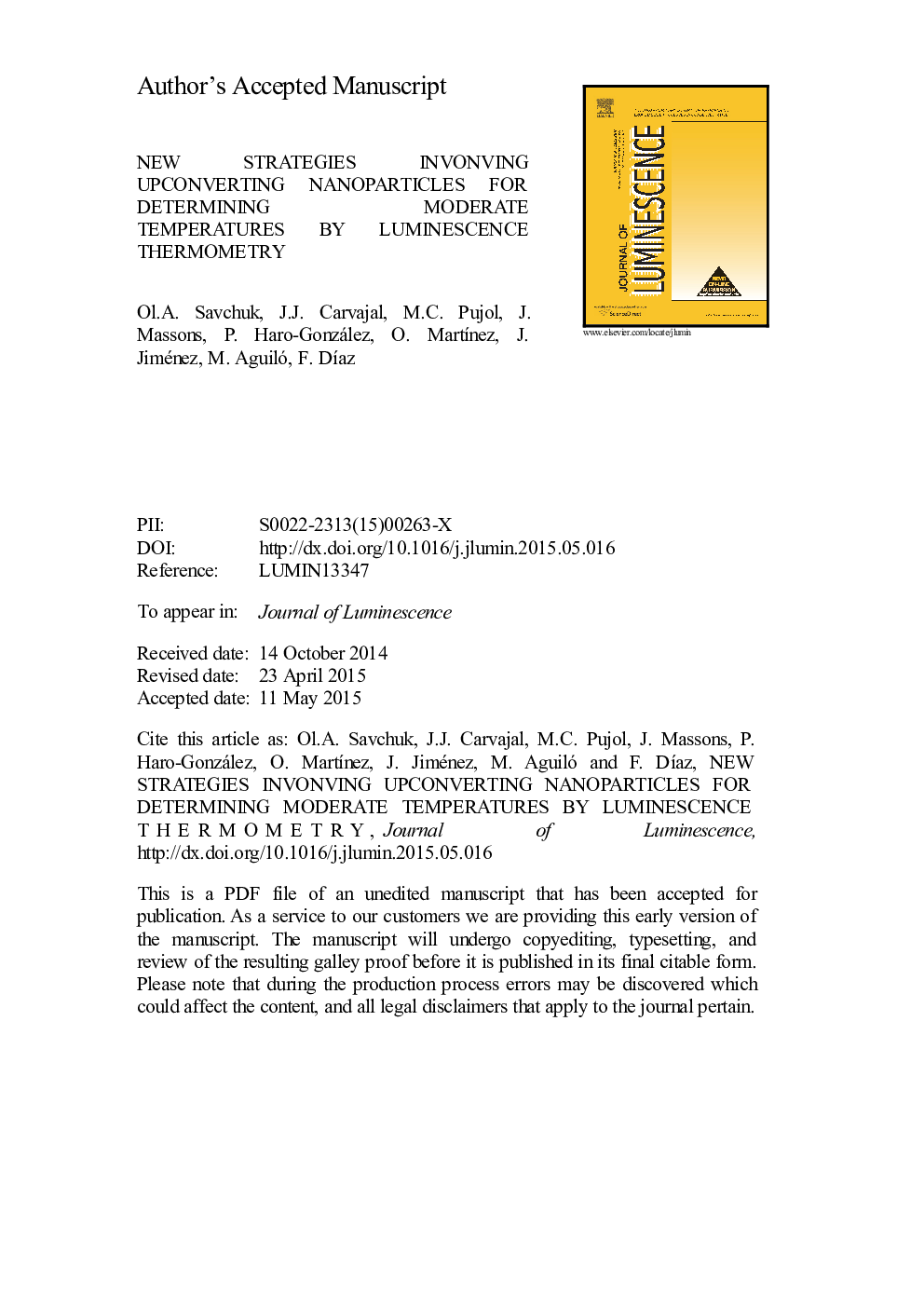| Article ID | Journal | Published Year | Pages | File Type |
|---|---|---|---|---|
| 5399169 | Journal of Luminescence | 2016 | 15 Pages |
Abstract
Here we analyze alternative luminescence thermometry techniques to FIR, such as intensity ratio luminescence thermometry between the emission arising from two electronic levels that are not necessarily thermally coupled, but that show different evolutions with temperature, and lifetime luminescence nanothermometry in (Ho,Tm,Yb):KLu(WO4)2 and (Er,Yb):NaY2F5O nanoparticles. (Ho,Tm,Yb):KLu(WO4)2 nanoparticles exhibited a maximum relative sensitivity of 0.61%Â Kâ1, similar to that achievable in Er-doped systems, which are the upconverting systems presenting the highest sensitivity. From another side, (Er,Yb):NaY2F5O nanocrystals show great potentiality as thermal sensors at the nanoscale for moderate temperatures due to the incorporation of additional non-radiative relaxation mechanisms that shorten the emission lifetime generated by the oxygen present in the structure when compared to (Er,Yb):NaYF4 nanoparticles exhibiting the highest upconversion efficiency. We used those nanoparticles for ex-vivo temperature determination by laser induced heating in chicken breast using lifetime-based thermometry. The results obtained indicate that these techniques might constitute alternatives to FIR with potential applications for the determination of moderate temperatures, with sensitivities comparable to those that can be achieved by FIR or even higher.
Related Topics
Physical Sciences and Engineering
Chemistry
Physical and Theoretical Chemistry
Authors
Ol.A. Savchuk, J.J. Carvajal, M.C. Pujol, J. Massons, P. Haro-González, O. MartÃnez, J. Jiménez, M. Aguiló, F. DÃaz,
